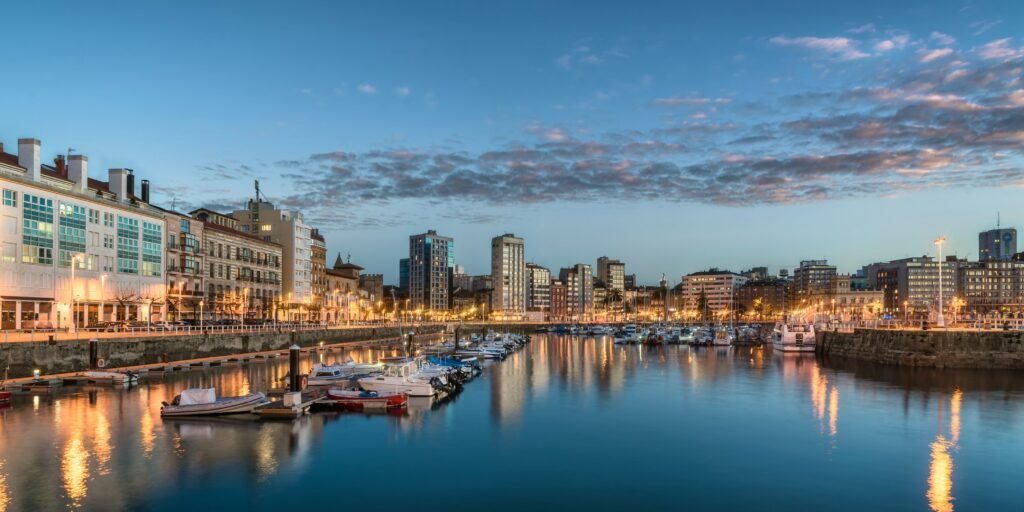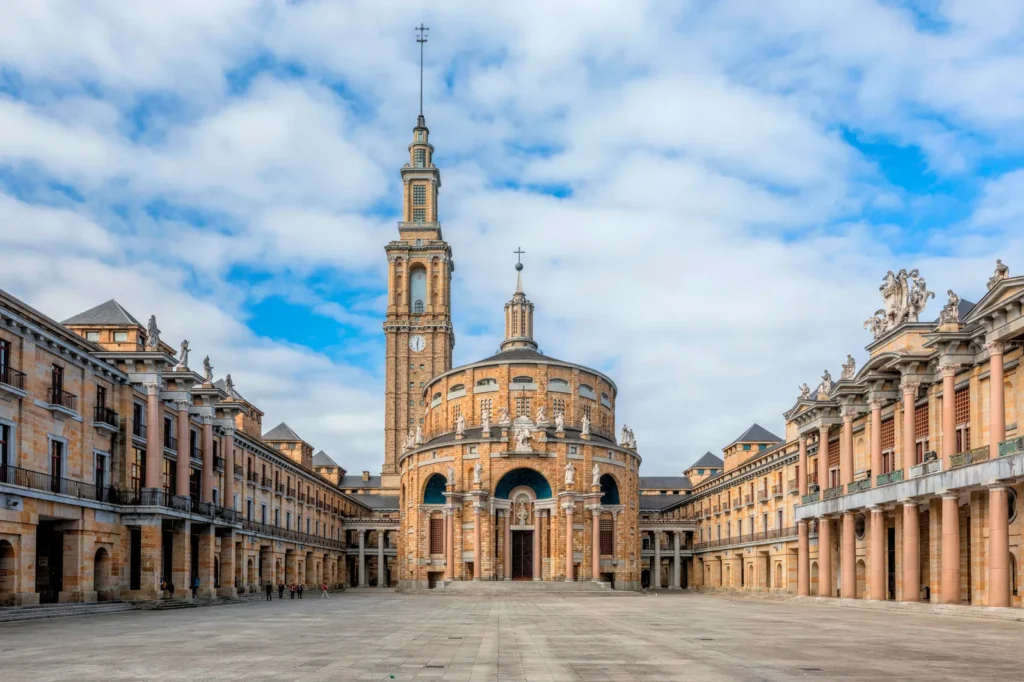

Gijón will delight us with its promenade stretching along the coast of the Cantabrian Sea, the beautiful San Lorenzo city beach and the historic old town and numerous sculptures. The beautiful greenery of the botnian garden and the delightful Jurassic museum… Gijon has so many attractions!

Gijón is a city in northern Spain, the largest in the autonomous community of Asturias. The city’s attractive location on the Cantabrian Sea, on the Bay of Biscay.

Laboral Ciudad de la Cultura
- Laboral City of Culture is a unique building in Gijón recognized as a site of cultural importance. The complex includes a diverse artistic program including music, cinema and performing arts, to which exhibitions, workshops, events and conferences, as well as guided tours that allow you to explore this cultural complex have been added.

Monumento a la Madre del Emigrante
- At the initiative of the city authorities, in 1970, in the El Rinconín area, on the La Providencia coastal route, a monument was erected in honor of emigrant mothers who suffered due to the absence of their children who set off for America. Thousands of residents of Asturias and Gijon jumped abroad (Cuba, Mexico, Argentina) in search of a better life than what their homeland offered them. This process began in the mid-19th century and lasted until later. entered the 20th century, until the 1960s, when the main direction of migration was European countries (Germany, France, Belgium). It is one of the most interesting sculptures in the place.

Elogio del Horizonte
- “In Praise of the Horizon” is a concrete sculpture located in the city of Gijón. It is a large-scale work, erected in 1990 on Cerro de Santa Catalina. It is considered a symbol of the city and is popularly called “King Kong’s toilet”.

Mirador de La Providencia
- Located away from the city center, half an hour’s walk from San Lorenzo beach, the observation deck of the Mirador de La Providencia. The point is an ideal place for a moment of peace and quiet in a seaside atmosphere. Observation deck, beautiful lush vegetation of Cape St. Park. Lawrence, offering extraordinary panoramic sea views. This is the perfect place to watch the sun set over the horizon.

Playa de San Lorenzo
- San Lorenzo beach is probably the most famous beach in Asturias. This is the bay of Gijón, one of the most beautiful in northern Spain, bounded on the west by Cerro de San Catalina and on the east by the Piles estuary. There are two beach volleyball courts on the beach. It is also worth taking a walk along the almost 3-kilometer promenade.

Playa de Poniente
- The beach is located in the western part of the city, the eastern border of which is the Gijón Marina and the western district of Natahoyo, which makes it very suitable for the city center. The waterfront is known for its nightlife. The promenade along which the beach is located is informally called Poniente or Paseo Marítimo de Poniente. On the eastern breakwater of the beach there is the modern seaside resort “Talasoponiente”, in the middle of the promenade – the chimney of the demolished Fábrica de Vidrios de Gijón, and on top of several other shipyards – the Gijón Aquarium.

Acuario de Gijón
- The Gijón Aquarium offers visits to 60 freshwater and marine aquariums to learn about the flora and fauna of the world’s seas. Journey around the seas of the world, starting with the Cantabrian River and freshwater species such as sturgeon, salmon and trout, until you reach warm waters full of corals and wonderful colorful fish and of course sharks, turtles… . Tickets should be booked online in advance as they often sell out.

Parroquia San Pedro
- The Church of San Pedro was built between 1945 and 1955 and occupies the site of a 15th-century temple that served as the city’s parish church until the end of the 19th century. The current church is inspired by Asturian pre-Romanesque temples.

Palacio de Revillagigedo
- Revillagigedo Palace it’s a baroque palace from the 18th century. It was built from the remains of a medieval tower on the orders of the Marquis of San Esteban del Mar del Natahoyo. It is one of the symbolic monuments of the city of Gijón. Inside there is the International Arts Center.

Barrio de Cimadevilla
- Barrio de Cimavilla is the oldest part of the city of Gijón. This is where there are ruins from Roman times and the Roman Baths. Here, on the Cerro de Santa Catalina hill, we can also find the characteristic Elogio del horizonte sculpture. The stone facades of 17th-century palaces, colorful buildings of former fishermen’s houses, and the 17th-century Augustinian monastery encourage visitors to visit Barrio de Cimavilla.

Jardín Botánico Atlántico
- One of the must-sees when visiting Gijón is the Atlantic Botanical Garden, a green space created specifically to showcase the particular flora of the Atlantic. The educational activity of this plant museum is undeniable, because in one place you can admire plants and ecosystems from near and far places. Understanding is facilitated by its good organization into four thematic areas, as well as educational panels and workshops that this botanical garden makes available to the public.

Jardín Botánico Atlántico

Jurassic Museum of Asturias
- On the coast of Asturias a few meters above sea level, is located the Jurassic Museum of Asturias (MUJA), a unique museum that, in the shape of a large dinosaur footprint, houses one of the most complete and educational exhibitions in the world about these extraordinary reptiles.
The Muja shows life from its beginnings to the appearance of the human being and offers extensive information on the different aspects of the life of dinosaurs, through the tracks that today are preserved on the Asturian coast that goes from Gijón to Ribadesella.

Jurassic Museum of Asturias
